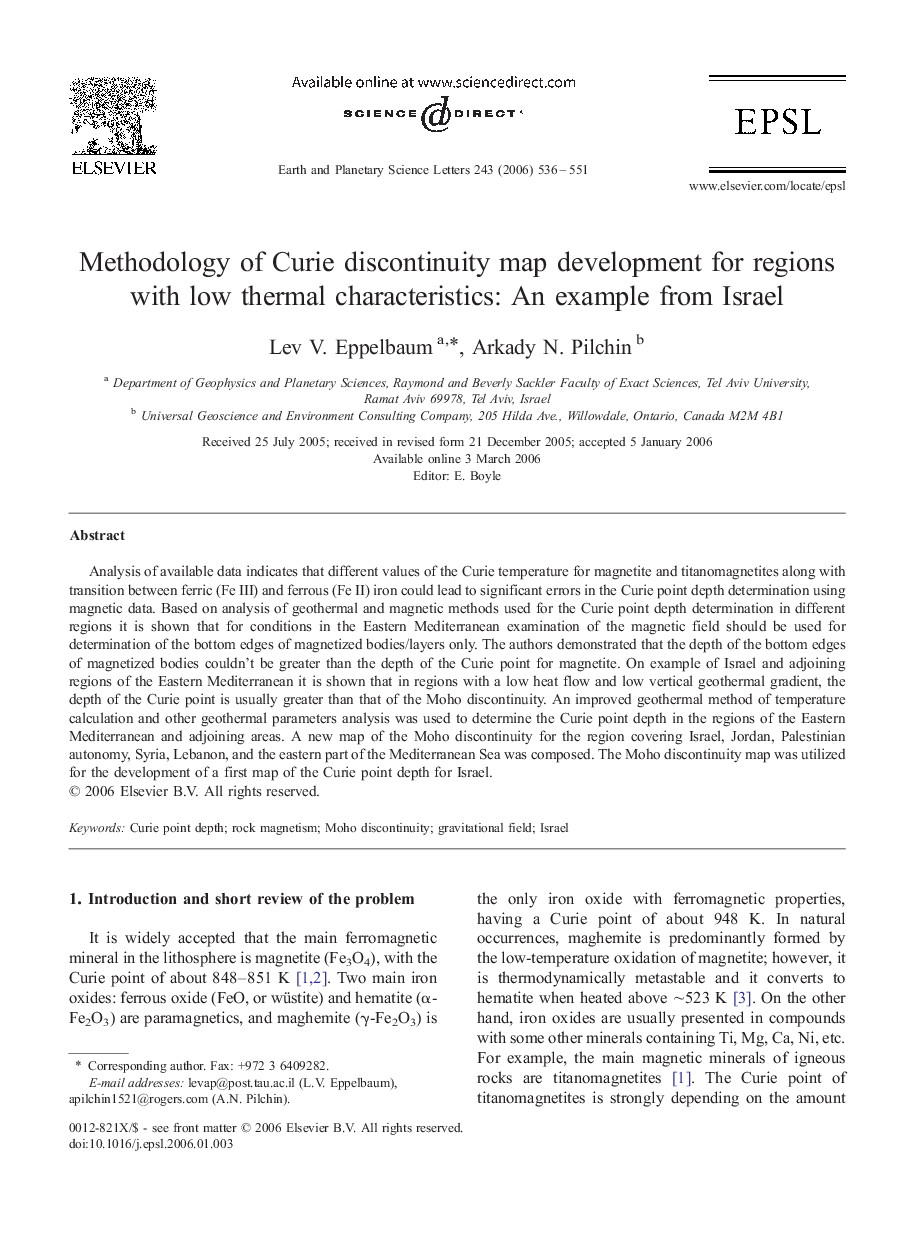| Article ID | Journal | Published Year | Pages | File Type |
|---|---|---|---|---|
| 4680902 | Earth and Planetary Science Letters | 2006 | 16 Pages |
Abstract
Analysis of available data indicates that different values of the Curie temperature for magnetite and titanomagnetites along with transition between ferric (Fe III) and ferrous (Fe II) iron could lead to significant errors in the Curie point depth determination using magnetic data. Based on analysis of geothermal and magnetic methods used for the Curie point depth determination in different regions it is shown that for conditions in the Eastern Mediterranean examination of the magnetic field should be used for determination of the bottom edges of magnetized bodies/layers only. The authors demonstrated that the depth of the bottom edges of magnetized bodies couldn't be greater than the depth of the Curie point for magnetite. On example of Israel and adjoining regions of the Eastern Mediterranean it is shown that in regions with a low heat flow and low vertical geothermal gradient, the depth of the Curie point is usually greater than that of the Moho discontinuity. An improved geothermal method of temperature calculation and other geothermal parameters analysis was used to determine the Curie point depth in the regions of the Eastern Mediterranean and adjoining areas. A new map of the Moho discontinuity for the region covering Israel, Jordan, Palestinian autonomy, Syria, Lebanon, and the eastern part of the Mediterranean Sea was composed. The Moho discontinuity map was utilized for the development of a first map of the Curie point depth for Israel.
Related Topics
Physical Sciences and Engineering
Earth and Planetary Sciences
Earth and Planetary Sciences (General)
Authors
Lev V. Eppelbaum, Arkady N. Pilchin,
